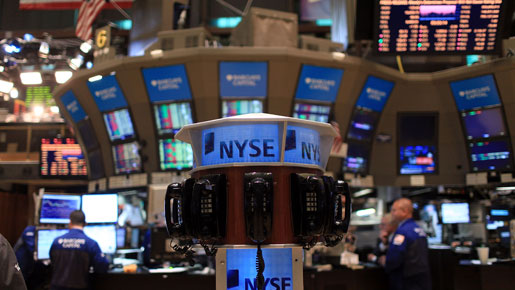
After the second 40 percent decline in America’s Standard and Poor’s composite index of common stocks in a decade, global investors are shell-shocked. Funds invested, and reinvested, in the S&P composite from 1998-2008 have yielded a real return of zero: the dividends earned on the portfolio have been just enough to offset inflation. Not since 1982 has a decade passed at the end of which investors would have been better off had they placed their money in corporate or United States Treasury bonds rather than in a diversified portfolio of stocks.
So investors are wondering: will future decades be like the past decade? If so, shouldn’t investments in equities be shunned?
The answer is almost surely no. At a time horizon of a decade or two, the past performance of stocks and bonds is neither a reliable guarantee nor a good guide to future results. Periods like 1998-2008, in which stocks do relatively badly, are preceded by periods – like 1978-1988 and 1988-1998 – in which they do relatively well, and are in all likelihood followed by similar periods.
Do the math. At the moment, the yield-to-maturity of the ten-year US Treasury bond is 3.76 percent. Subtract 2.5 percent for inflation, and you get a benchmark expected real return of 1.26 percent.
Meanwhile, the earnings yield on the stocks that make up the S&P composite is fluctuating around six percent: that is how much money the corporations that underpin the stocks are making for their shareholders. Some of that money will be paid out in dividends. Some will be used to buy back stock – thus concentrating the equity and raising the value of the stock that is not bought back. Some will be reinvested and used to boost the company’s capital stock.
You can argue that the corporate executives have expertise and knowledge that allows them to commit the funds they control to higher-return projects than are available in the stock market. Or you can argue that they are corrupt empire-builders who dissipate a portion of the shareholders’ money that they control.
The sensible guess is that these two factors cancel each other out. Thus, the expected fundamental real return on diversified US stock portfolios right now is in the range of six to seven percent. The expected market return is that amount plus or minus expected changes in valuation ratios: will stocks return more as price-earnings ratios rise, or return less as price-earnings ratios fall? Once again, the sensible guess is that these two factors more or less cancel each other out. Compare the six to seven percent real return on stocks to a 1.25 percent real return on bonds.
But aren’t stocks risky? Couldn’t earnings collapse? Couldn’t the market undergo another 40 percent decline in the near future? Aren’t bonds safer? The answers to these questions are yes, yes, yes, and yes.
Remember: we already had another 40 percent decline in 2000-2003, and are in another one right now. We also had the long slide from 1977-1982 that followed a 40 percent collapse from 1973-1975. Before that, we had declines in 1946-1949, 1937-1942, and the biggest of them all in 1929-1933.
But stock market declines that are not accompanied by steep and persistent collapses in earnings are by their nature temporary: they are provoked by steep rises in perceived risk, and if those risks turn out to be overblown, stocks rebound when the perception of risk falls.
And how about stock market declines that are accompanied by a steep and persistent collapse in earnings – by depressions?
In the pre-World War II era, when governments held fast to the gold standard, depressions were times of deflation. But in the post-World War II era, in which social democratic governments maintain welfare spending and Keynesian economic advisers seek to use fiscal policy to boost output, an earnings depression is much more likely to be accompanied by inflation.
True, a steep and persistent collapse in earnings will erode wealth invested in stocks. But the inflation that accompanies it will produce a steeper and larger erosion of real wealth invested in nominal bonds. As Edgar L. Smith wrote in the Atlantic Monthly back in 1924, when the principal risks are macroeconomic, bonds are no safer than diversified portfolios of stocks – in fact, they are riskier.
All these arguments apply only to long-term investors who can afford to wait out another 40 percent decline in values and keep their money invested until perceived risk drops. (And if perceived risk never drops then you have worse things to worry about than the performance of your portfolio.) For retirees and other people who need to spend soon, the year-to-year variability of the stock market commands caution.
But for those who do not need to spend soon, the recent decline in equity values is more an opportunity than a catastrophe. We liked the stocks in our portfolio a year ago for their long-term prospects. Today’s short-term crisis does not materially alter their long-term prospects. And now we have an opportunity to buy more, and cheaply.
© Project Syndicate 1995–2008

